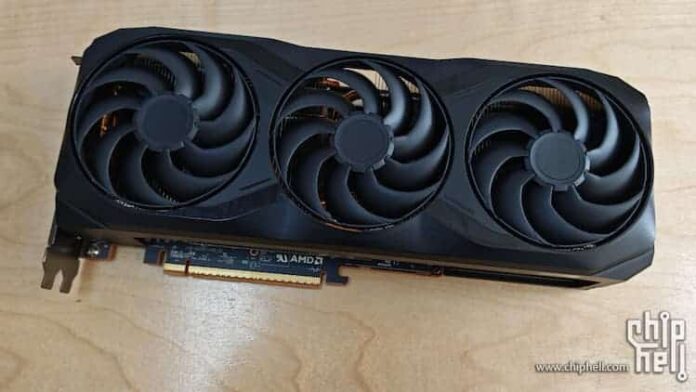With its RX 9000 series of boards, AMD doesn’t have a real offering capable of competing with NVIDIA’s top-of-the-range products. Indeed, the best model in the series, the RX 9070 XT, only comes up against the RTX 5070 Ti, leaving the RTX 5080 and RTX 5090 untouchable. However, things could well change with the RDNA 5 (or UDNA). We’re talking big GPUs with large memory buses and lots of compute units
UDNA/RDNA5: AMD’s return to the high-end?
This rumor is brought to us by leaker Kepler_L2 (who has a solid track record) on the Anandtech forum. He tells us that the next generation of graphics cards from the Reds will reintroduce high-end GPUs with large configurations. He points to cards with up to 96 compute units, where the RX 9070 XT has a maximum of 64. The same applies to memory, with talk of a 384-bit bus compared with the 256-bit currently available on Navi 48s. We can also assume that AMD is finally opting for GDDR7 and not GDDR6 as is currently the case.
As for the mid-range offering, we can assume that the configuration will be equivalent to that of current cards. However, despite the equivalent numbers, we can expect architectural improvements to boost performance. We can imagine that ray tracing will continue to advance, not to mention the progress to be made in the field of AI.
Of course, all this is just another rumor, and when we see the current timetable, things can change very quickly. As things stand, we’re talking about mass production in the second quarter, with a launch in the second half of 2026.
Let’s also hope for more consistency in terms of memory!
Quite honestly, with this series, we’d like to see 8GB VRAM cards disappear. Ideally, entry-level 12GB with mid-range 16/24GB and high-end 32GB would be ideal. We would no longer have this strange segmentation with entry-level cards with more VRAM than mid-range GPUs, such as the RTX 5060 Ti 16 GB vs. the RTX 5070 12 GB. A little consistency wouldn’t hurt.
The post UDNA/RDNA5: AMD back on the high-end? appeared first on Overclocking.com EN.

